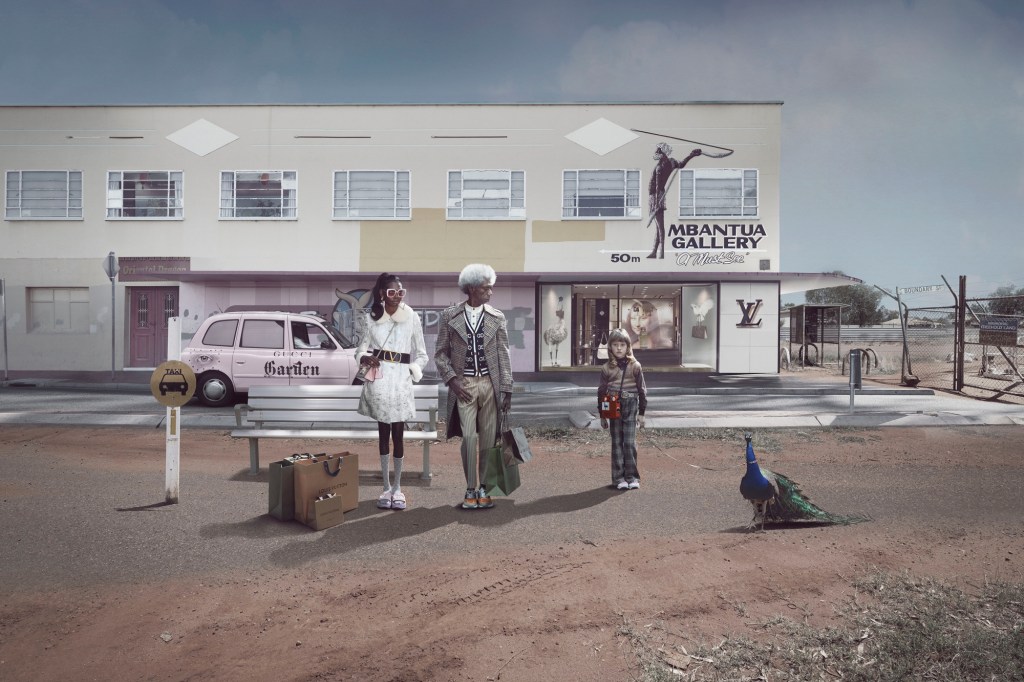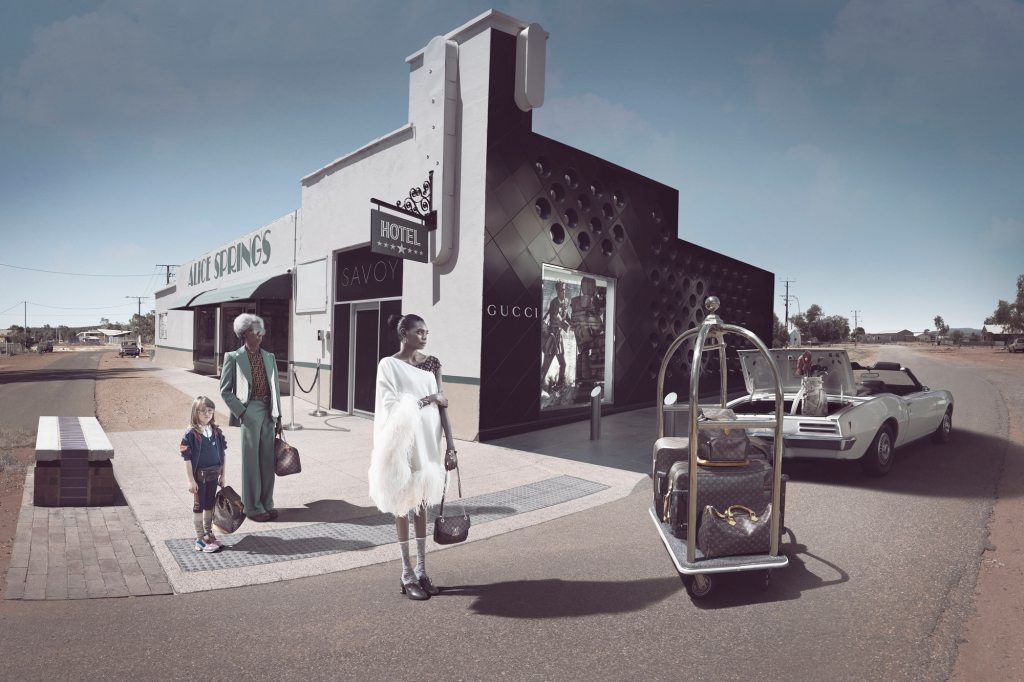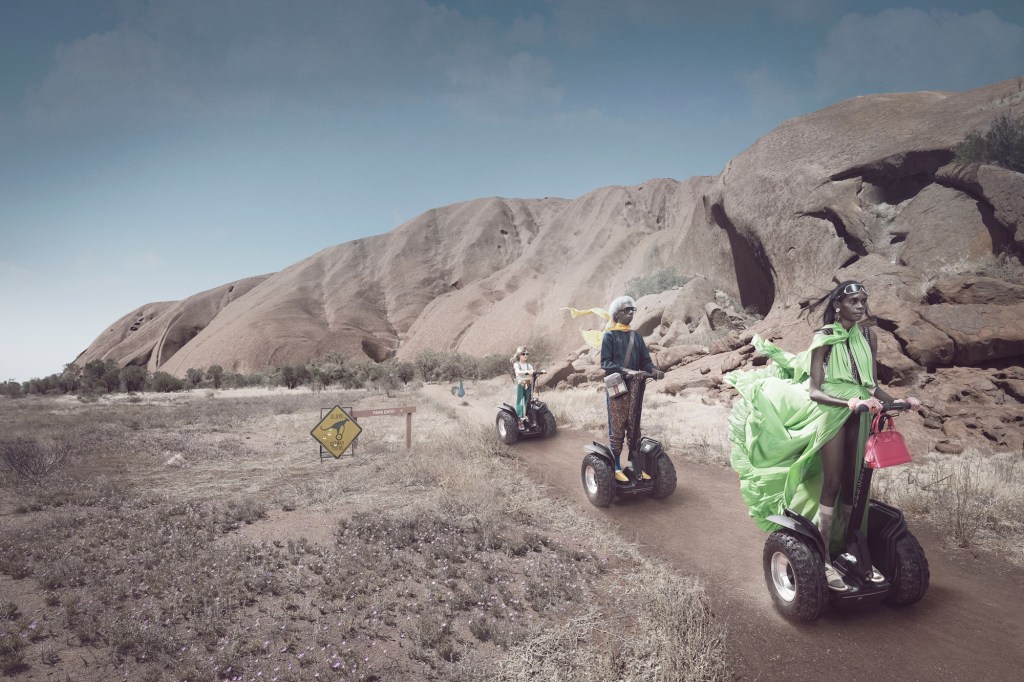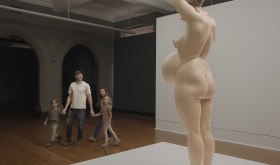It is hard to believe that a dozen years have passed since the eyes of the art world were first laid upon the work of Michael Cook. Introduced through a private gallery in Bowen Hills, Brisbane, in 2010, his consummate craftsmanship and capacity for critical conceptualisation was immediately apparent. Adopted and raised by a non-Indigenous family, the Bidjara artist came to the industry after sustained international success in commercial photography. His meteoritic rise includes contributing to the 7th Asia Pacific Triennial of Contemporary Art (APT7) in 2013, featuring in Personal Structures: Crossing Borders as part of the Venice Biennale in 2015 and winning the Fisher’s Ghost Art Award in 2022.
Each artwork has elevated aspects of Indigenous Australia and, more often than not, inserted his people into positions of prominence. This scintillating exhibition, Fake, is no exception. There is, however, a harkening back to his former career through the juxtaposition of references to the oft counterfeited multinational corporations: Gucci, Luis Vuitton (LV) and Savoy.
A series of tableaus, shot in a fashion that might grace the pages of a tabloid as advertisements, brings bling to the understated surrounds provided by the recently renovated Jan Murphy Gallery. The scale of the photographs may reflect the size of windows in domestic dwellings, the white frames accentuating this illusion that viewers are gazing through cavities in the walls. They seem to embrace a rhetoric of painting that extends beyond ‘Western’ art history. The photographs offer a chic, yet cynical, vantage point into the post-colonial Australian landscape.
Visitors are taken on a pilgrimage with a First Nations couple and their non-Indigenous child, portrayed by the glamorous model and acclaimed actress Magnolia Maymuru and child model Cassius. The third person is Richard Gala, a friend and frequent collaborator of the artist. In a number of the compositions the family is also trailed by a male peacock, which was presumably purchased by the child in Shopping (2023). A species introduced by British colonialists from the Indian subcontinent, peacocks have been known to connote real estate of value.

The Outback also presents as an indomitable character in the narrative. Many of the locations have also been seamlessly embellished by Art Deco architectural features akin to the US resort city Palm Springs, but referential to the Australian destination of Alice Springs.
The artworks are positioned throughout the space in a loose order, with Welcome Sign (2023) greeting visitors in the streetfront window. Depicted is the family photographing their arrival in Alice Springs using a compact camera positioned on the bonnet of their very white and American soft-top convertible. One of the first compositions encountered in the main gallery space documents their arrival at a Hotel (2023).

There is a trolley in the process of being loaded with LV luggage and a golf bag protruding from a trunk. The attire of the matriarch consistently carries a plumage-like flamboyance. Her flailing lime garment in Segway (2023), which depicts the devices of the title being ridden past Uluru, serves to accentuate the arid beauty of the site. This contrast in key has been enhanced, with the ground of the image reduced in saturation to subtle hues.
The close to immaculate construction of these images critiques an ill-conceived strategy on the part of our nation to stake its post-colonial identity on the culture of peoples that it will not entirely enfranchise. A seemingly insatiable appetite for the aesthetics of Australian First Nations people in international art and couture has not diminished their marginalisation nor entrenched poverty.
The digital enhancement of Central Australian locales, with facilities that are inextricable from gentrified tourism hotspots across the globe, draws attention to the deprivation of the most basic amenities experienced by many residents.
There are some distinctly American elements that frame these glamorous depictions of our First Nations people in alignment with their civil rights movement. The Post-Racial rise of Black Power is associated with a diaspora as opposed to Indigenous communities. The employment of such rhetoric amplifies the artifice of these images.
Read: Exhibition review: Hannah Quinlivan and Dobell Drawing Prize
There is an autobiographic element, as the Cook family similarly took journeys to remote communities. The childhood wonder and abandonment of travel captured in these compositions may resonate with some viewers. However, the discord between how our First Nations people are portrayed in international forums, and the realities with which they contend in their daily lives, should be a concern for all Australians. The notion has been masterfully conveyed through this Michael Cook exhibition.
Michael Cook’s Fake will be exhibited at Jan Murphy Gallery until 22 April 2023.





